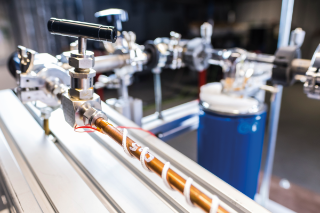
Efficient heat exchangers provide an essential contribution to an energy efficient, compact and cost effective supply of heat and cold in buildings.
download [ PDF 0.83 MB ]Climate-Neutral Heat and Buildings

Efficient heat exchangers provide an essential contribution to an energy efficient, compact and cost effective supply of heat and cold in buildings.
download [ PDF 0.83 MB ]
Thermal energy storage is essential for many applications in buildings, transport, medicine, engineering and industry. We develop, optimize and characterize new materials as well as new and existing components and assemblies for thermal storages and entire storage systems.
download [ PDF 0.88 MB ]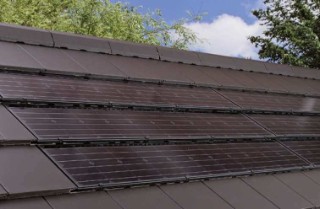
According to a study by Fraunhofer ISE, photovoltaic systems on Germany’s roofs have a technical potential of approx. 560 GWp. So far, rooftop systems have mostly been installed on house roofs. However, with a widespread expansion of rooftop solar installations, there is a risk that the public’s acceptance of photovoltaic systems could decline. One solution is to use integrated solar modules instead of roofing tiles, which are visually hardly distinguishable from conventional roofing tiles and produce solar power at the same time.
download [ PDF 0.68 MB ]
Auf Deutschlands Dächern haben Photovoltaiksysteme laut einer Studie des Fraunhofer ISE ein technisches Potenzial von ca. 560 GWp. Bisher werden meist Aufdachanlagen auf Hausdächern errichtet. Bei einem breitflächigen Ausbau der Solar-dachanlagen besteht jedoch die Gefahr, dass die Akzeptanz der Bevölkerung für Photovoltaiksysteme schwinden könnte. Eine Lösung können integrierte Solarmodule statt Dachziegel für die Dacheindeckung sein, die sich optisch kaum von herkömmlichen Dachziegeln unterscheiden und dabei Solarstrom produzieren.
download [ PDF 0,67 MB ]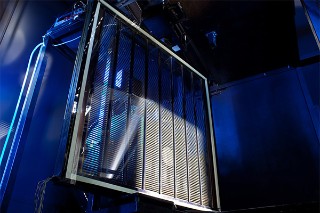
Optische und thermische Prüfungen für Fassaden Im TestLab Solar Façades charakterisieren wir transparente, transluzente und opake Materialien, prüfen Fassadenbauteile und charakterisieren die energetischen, thermischen und optischen Eigenschaften von kompletten Fassaden. Das TestLab ist als notifizierte Stelle für die Prüfung von Bauprodukten in der EU anerkannt. Außerdem unterstützt es europäische Hersteller, die ihre Produkte in den nordamerikanischen Markt verkaufen wollen, durch seine RDA-Dienstleistungen für das US-amerikanische National Fenestration Rating Council (NFRC) und als anerkanntes Prüflabor für das Attachment Energy Rating Council (AERC).
download [ PDF 1,4 MB ]
Effiziente Wärmeübertrager sind ein entscheidender Baustein für eine energiesparende, kompakte und kostengünstige Wärme- und Kälteversorgung von Gebäuden.
download [ PDF 0,84 MB ]
Gebäude haben einen hohen Anteil am Gesamtenergiebedarf und an den Treibhausgasemissionen. Die bauwerkintegrierte PV (BIPV) kann die CO2-Bilanz eines Gebäudes wesentlich verbessern, idealerweise bis zum Nullenergie- oder Plusenergiegebäude.
download [ PDF 0,92 MB ]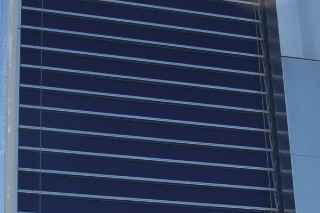
Bauwerkintegrierte solarthermische Kollektoren (BIST) sind häufig kostengünstiger als konventionelle Kollektoren. Da die Gebäudehülle inklusive Solartechnik aus einer Hand geplant, produziert und errichtet wird, ergeben sich Einsparungen bei Material, Arbeitszeit, Planung und Abwicklung. Innovative BIST-Komponenten sind architektonisch ansprechend, einige bieten zusätzlich Durchsicht und Sonnenschutz.
download [ PDF 0,78 MB ]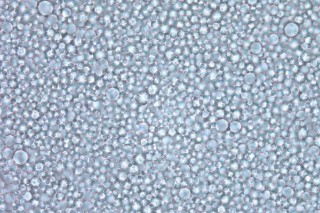
Effiziente Wärme- und Kältekreisläufe sind eine wichtige Voraussetzung, um den CO2-Ausstoß zu reduzieren. Der Einsatz von flüssigen Phasenwechselmaterialien als Hochleistungswärmeträger (Phase Change Material Slurries, PCM) leistet hierzu einen wichtigen Beitrag. PCM-Slurries finden Anwendung bei der Kühlung von Gebäuden und Maschinen sowie bei der Batteriekühlung von E-Fahrzeugen.
download [ PDF 0,78 MB ]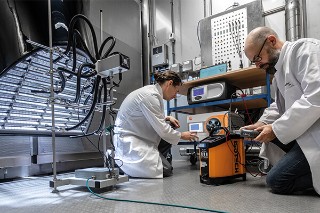
Wärmepumpen und Kältemaschinen sind eine Schlüsseltechnologie für die CO2-Reduktion im Gebäudesektor. Für ihre nachhaltige Vermarktung ist eine verlässliche und unabhängige Charakterisierung von zentraler Bedeutung. Die steigende Komplexität der Systeme sowie hohe Anforderungen seitens der Industrie erfordern hierfür modernste Messtechnik und ein exzellentes fachliches Know-how.
download [ PDF 1,52 MB ]